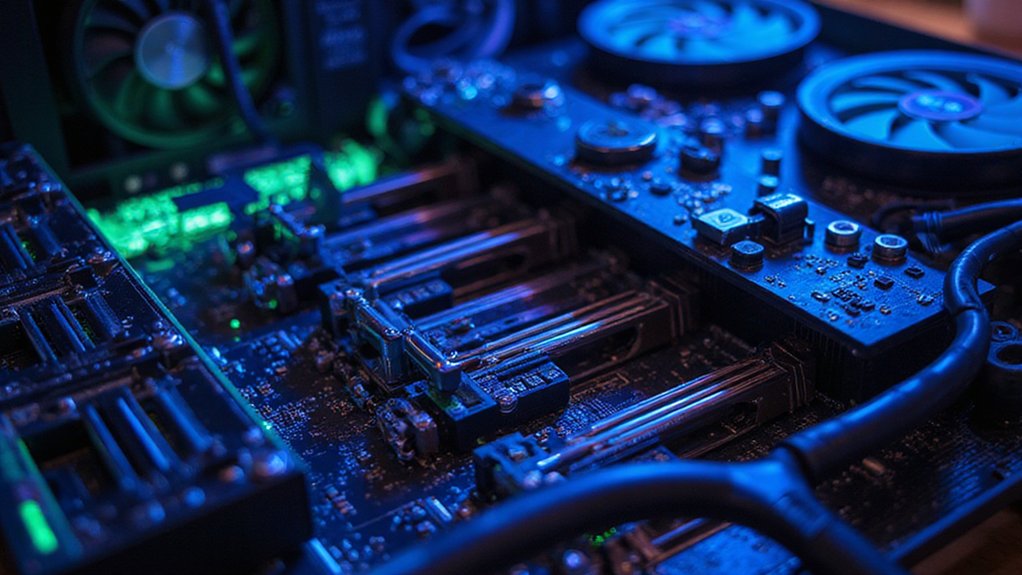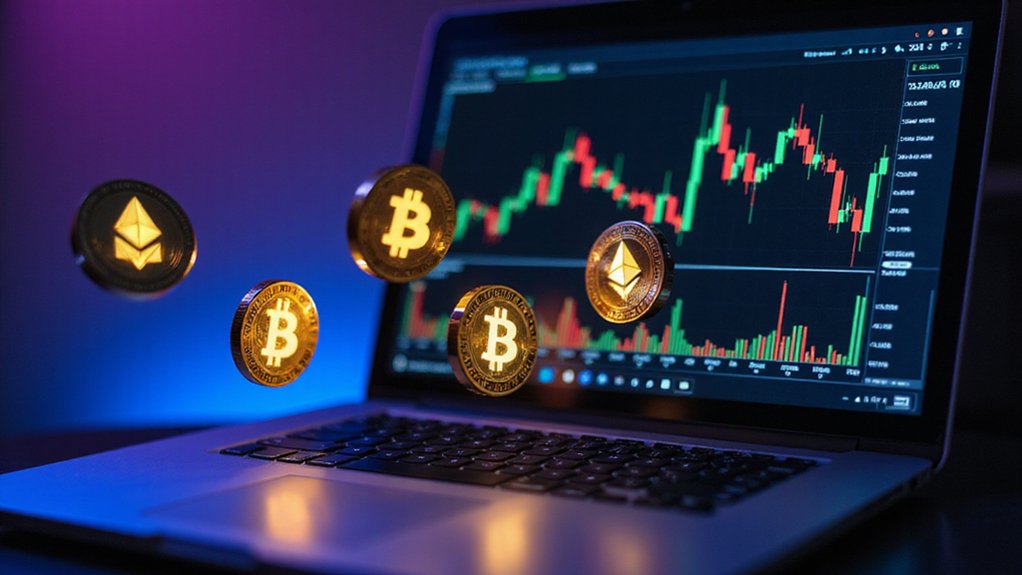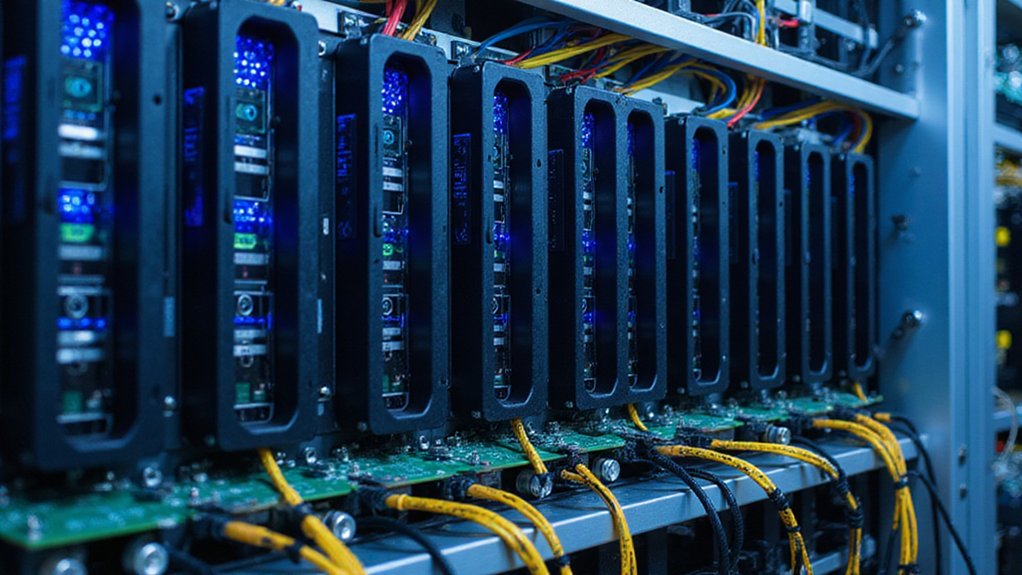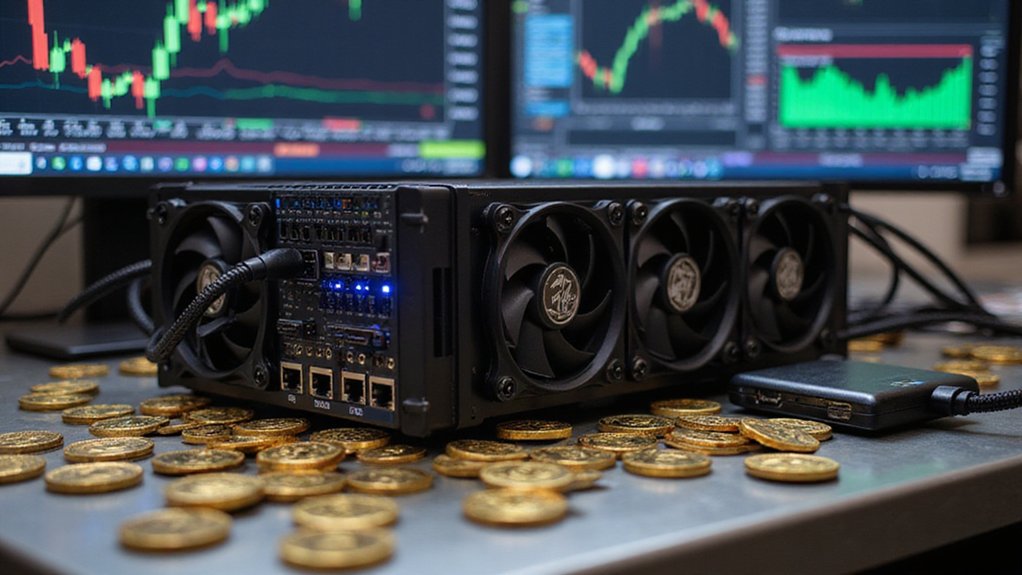Cryptocurrency mining software orchestrates the complex dance between computational hardware and blockchain networks, transforming processing power into digital rewards through sophisticated validation algorithms. These applications support diverse hardware configurations—from specialized ASICs to traditional GPUs—while offering features ranging from automatic coin-switching to real-time performance analytics. Cost structures vary dramatically, with free versions providing basic functionality and premium subscriptions revealing advanced management capabilities. The software selection process can literally determine whether mining operations achieve profitability or face bankruptcy, making this technical foundation surprisingly essential for anyone considering entry into the mining ecosystem.

While the concept of digital currency mining might conjure images of pickaxes and hard hats, the reality involves sophisticated software systems that coordinate the computational heavy lifting required to validate blockchain transactions and mint new cryptocurrency coins. These applications serve as the critical interface between miners and the blockchain networks they support, transforming raw computational power into cryptocurrency rewards through solving complex mathematical problems.
The selection of mining software greatly influences operational efficiency and profitability, with compatibility requirements spanning multiple operating systems including Windows, Linux, and Mac platforms. Modern mining applications support diverse hardware configurations—from specialized ASICs to traditional GPUs, FPGAs, and CPUs—though one might wonder why anyone still bothers with CPU mining given its laughably inefficient returns.
Modern mining software must juggle cross-platform compatibility and hardware diversity while miners inexplicably cling to CPU mining despite its comically poor returns.
Software like Awesome Miner accommodates over 50 mining engines across various hardware types, while BFGMiner offers cross-platform compatibility that enhances operational flexibility. Mining software distinguishes itself through algorithm support, with applications capable of handling multiple hashing functions such as SHA256d and Scrypt.
This flexibility enables miners to pivot between different cryptocurrencies based on market conditions and profitability calculations—a feature that proves invaluable when Bitcoin’s difficulty adjustments render mining temporarily unprofitable. Advanced platforms include automatic coin-switching capabilities that optimize returns without manual intervention.
User interfaces range from beginner-friendly graphical dashboards to command-line interfaces that require technical expertise (and perhaps a masochistic streak). Real-time monitoring tools provide performance analytics and operational alerts, while multi-pool management features enhance reliability and payout optimization. CGMiner stands as the oldest and most respected mining software, having maintained its position since 2011 through consistent updates and community support.
The irony of needing sophisticated software to mine “decentralized” currency apparently escapes most participants in this digital gold rush. Cost structures vary considerably, with free versions offering basic functionality while paid subscriptions reveal advanced features like remote management and enhanced analytics.
Many applications impose limitations on free tiers—restricting the number of miners or operational capabilities—effectively encouraging upgrades through artificial constraints. Open-source alternatives provide community-driven improvements, though they typically require greater technical knowledge for effective implementation. The mining software integrates seamlessly with mining pools where individual miners combine their computational resources to improve their chances of earning rewards.
The mining software landscape reflects the broader cryptocurrency ecosystem’s evolution from hobbyist experimentation to industrial-scale operations, where software selection can determine the difference between profit and bankruptcy.
Frequently Asked Questions
How Much Electricity Does Crypto Mining Software Consume Daily?
Bitcoin mining software consumes approximately 0.25 to 0.44 terawatt-hours daily—roughly 0.5% of global electricity consumption.
Individual miners typically burn through $30 worth of electricity daily, while each transaction devours up to 1,200 kWh.
The network’s voracious appetite exceeds entire nations like Finland, generating 60,000 metric tons of CO2 emissions daily.
Mining difficulty adjustments and Bitcoin’s price volatility directly influence this already staggering consumption baseline.
Can I Mine Cryptocurrency on My Smartphone or Tablet?
While technically possible, smartphone cryptocurrency mining represents a masterclass in futility—devices lack the computational horsepower for meaningful returns while risking hardware damage through overheating and battery degradation.
Google’s Play Store ban reflects this reality. Mobile apps typically target obscure altcoins or masquerade as cloud mining services rather than actual on-device mining.
Given the electricity consumption discussed previously, smartphones would fundamentally burn through battery life for negligible rewards.
What Happens to My Mining Rewards if the Software Crashes?
When mining software crashes, any work completed since the last share submission vanishes into the digital ether—hardly surprising given the precarious nature of cryptocurrency operations.
Mining pools credit rewards based on confirmed shares before the crash, so previously earned rewards remain secure in pool accounts.
However, the partially completed work (which miners optimistically believed would generate returns) becomes worthless, demonstrating yet another charming inefficiency in crypto mining’s reward structure.
Do I Need Technical Expertise to Troubleshoot Mining Software Issues?
Basic troubleshooting—checking configurations, restarting rigs, installing firmware updates—requires minimal technical expertise, though one must follow instructions meticulously to avoid bricking hardware.
However, boot loops, persistent crashes, or hardware detection failures demand professional intervention.
The irony? Many miners dive headfirst into cryptocurrency’s complexities yet balk at learning elementary system administration.
While routine maintenance remains accessible, serious bugs and hardware diagnostics necessitate genuine technical competence or costly professional support.
Can Mining Software Damage My Computer’s Hardware Over Time?
Mining software doesn’t directly damage hardware, but it orchestrates the relentless computational ballet that does.
The software pushes GPUs and ASICs to their thermal limits, creating sustained high-load conditions that accelerate component degradation. Heat generation, continuous stress, and potential overclocking configurations (all software-mediated) systematically erode hardware lifespan.
While the code itself remains benign, its operational demands transform expensive silicon into depreciating assets faster than manufacturers intended.









